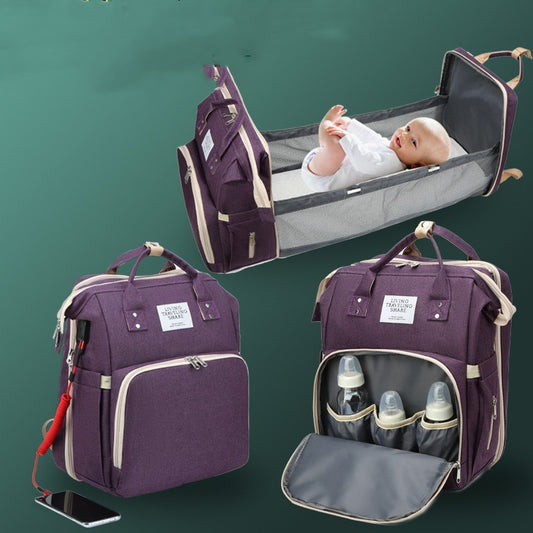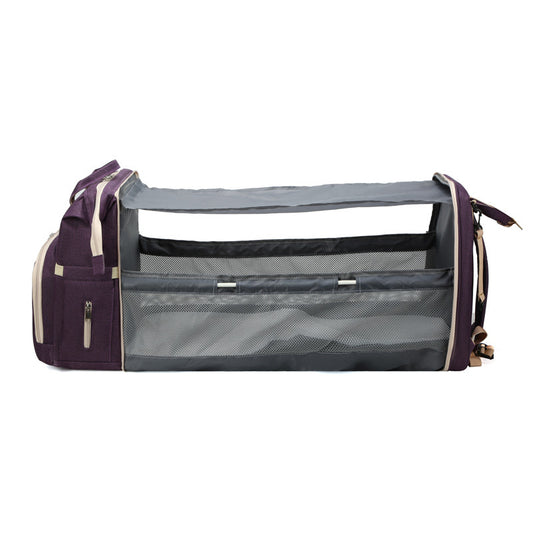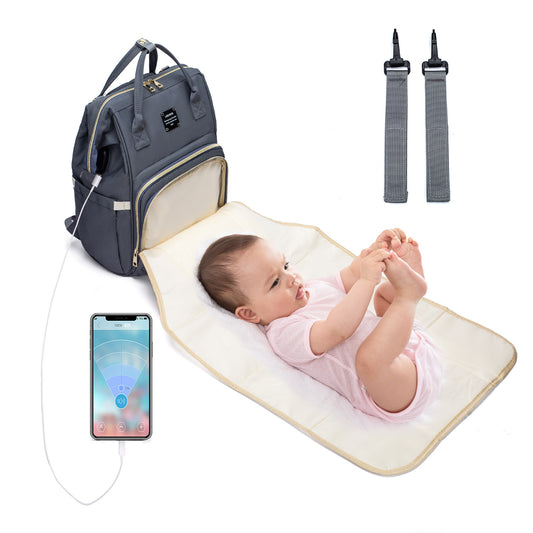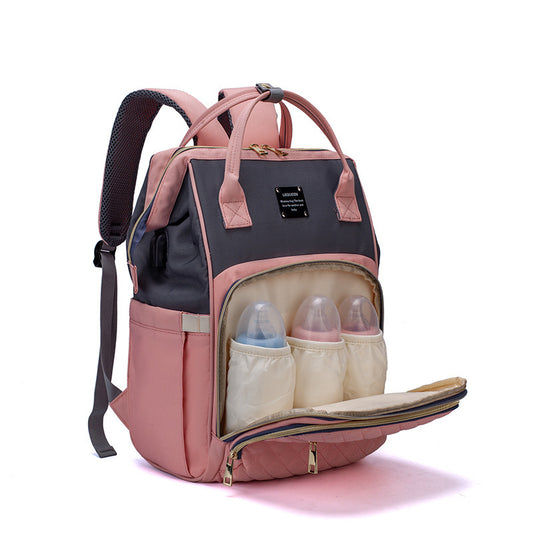Choosing the right baby changing bag in 2025 is more than a style choice – it’s a practical decision that directly affects your day-to-day life as a parent. Whether you're heading to the park, to nursery, or for a full day out, a changing bag is your go-to companion for keeping things organised and stress-free.
This guide is designed to help UK parents choose the right type of bag, understand key features to look for, learn how to pack efficiently, and explore trending options currently popular across the country.
What is a Baby Changing Bag and Why Do You Need One?
Purpose of a Changing Bag
A baby changing bag is a specially designed storage solution for baby care items when you're away from home. Unlike regular handbags or backpacks, these are designed with compartments for keeping baby supplies neat, accessible, and often protected against leaks or spills.
What Parents Typically Carry
Here’s what most new parents carry:
-
3 to 5 nappies
-
Pack of wipes
-
Travel-changing mat
-
1 to 2 baby bottles
-
Bottle warmer or insulated bottle holder
-
Spare clothes (vests, sleepsuits, socks)
-
Bibs or muslins
-
Teething ring or dummy
-
Parents’ essentials: phone, keys, purse or wallet
Types of Baby Changing Bags in 2025
Modern changing bags have evolved far beyond their basic forms. Here are the main types seen across the UK:
1. Backpack Changing Bags
Ideal for mobility and comfort. Distributes weight evenly across both shoulders. Parenting in 2025 increasingly suits hands-free convenience.
Common features include:
-
Padded shoulder straps
-
Multiple internal sections
-
USB charging ports
-
Waterproof outer shell
2. Tote-Style Changing Bags
Popular among parents seeking a sleek, fashionable look. They often double as personal handbags.
-
Often made from high-end vegan leather
-
Easy to place on a buggy using pram clips
-
Stylish but often with fewer compartments than backpacks
3. Eco-Friendly Changing Bags
Sustainable options made from recycled materials or organic cotton. These are increasingly popular among environmentally-conscious UK households.
4. Convertible Changing Bags
These adapt between backpack, shoulder bag, and pram organiser, giving parents complete flexibility based on where they’re going and who’s carrying it.
What to Look for When Buying a Baby Changing Bag
Not all changing bags are made equal. These features make a real difference:
Size and Compartments
Look for bags with at least 8–10 compartments. Multiple sections make it easier to grab what you need quickly, especially while holding your baby.
Waterproof or Wipe-Clean Interior
A waterproof or easy-wipe interior is essential to protect from spills and accidents. Machine-washable interiors are a bonus.
Built-in or Included Changing Mat
This saves space and is a must-have for public nappy changes.
Insulated Bottle Section
Helps maintain feeding temperature. A standard bottle pocket will not deliver the same benefit.
Comfortable Straps and Practical Design
Padded straps, lightweight materials, and back ventilation are essential, particularly if you walk a lot or use public transport.
Style That Suits Both Parents
Many parents prefer gender-neutral, modern aesthetics so anyone can carry the bag comfortably.
Price vs. Durability
Bags typically range between £30 and £100. Mid-range prices often hit the sweet spot in terms of functionality and build quality.
How to Pack a Baby Changing Bag: Checklist for New Parents
Packing should be simple but thorough. Here’s a dependable checklist:
Essentials
-
4–6 nappies
-
A pack of baby wipes
-
Travel-size nappy rash cream
-
1–2 spare bodysuits, baby grows
-
Lightweight blanket (seasonal)
Feeding
-
2 bottles or feeding containers
-
Formula or snacks
-
Bibs and muslin cloths
-
Bottle warmer or thermal pouch
Extras
-
Dummy in a clean case
-
Small toy or teether
-
Antibacterial gel or wipes
-
Changing mat
Parent Items
-
Phone, charger, cards/cash
-
Sunglasses or medication
-
Nursing pads (if applicable)
Number one tip: restock each evening so you’re not pulling things together last-minute during a busy morning.
Real Parent Tips: Making the Most of Your Bag
-
Use pouches or zip-lock bags to categorise gear inside.
-
Avoid overpacking. Focus on compartments over quantity.
-
Select neutral styles both parents or carers will feel comfortable carrying.
-
Keep a zipped emergency section with spare clothes, dummy, and £5 in cash.
-
Refresh what’s inside every few months to match your baby’s growth stage.
Conclusion
A dependable baby changing bag is more than helpful—it’s essential. In 2025, UK parents are choosing bags that blend practicality, comfort, and style. From streamlined backpacks to convertible eco options, the focus is on functionality that fits modern life.
Before buying, consider your daily needs, preferred carry method, and which features would actually make parenting tasks smoother. With the right investment, your changing bag becomes your silent helper every time you leave the house.
Looking for a trusted, stylish baby changing bag?
Shop at kidyra.store – built for comfort, designed for parent life in 2025.
Frequently Asked Questions (FAQs)
Q1. What do I need in a baby changing bag?
Nappies, wipes, a portable changing mat, extra clothes, feeding supplies, and basic hygiene items like hand gel or nappy cream.
Q2. What's the best baby changing bag in the UK?
In 2025, parents prefer multi-compartment backpack-style bags with waterproof interiors and breathable straps. Eco-friendly bags are also gaining popularity.
Q3. Can I use a regular backpack as a changing bag?
While possible, it lacks features like thermal bottle pockets, changing mats, or wipeable interiors. Purpose-built bags offer better organisation for parenting needs.
Q4. Are baby changing bags necessary?
Yes. They help you organise baby essentials, reduce stress during travel, and ensure you have everything in one place for feeding or changing on the go.
Q5. How do I keep a changing bag organised?
Use internal compartments, label pouches, and repack nightly. Avoid clutter by only packing items necessary for the duration of your outing.





